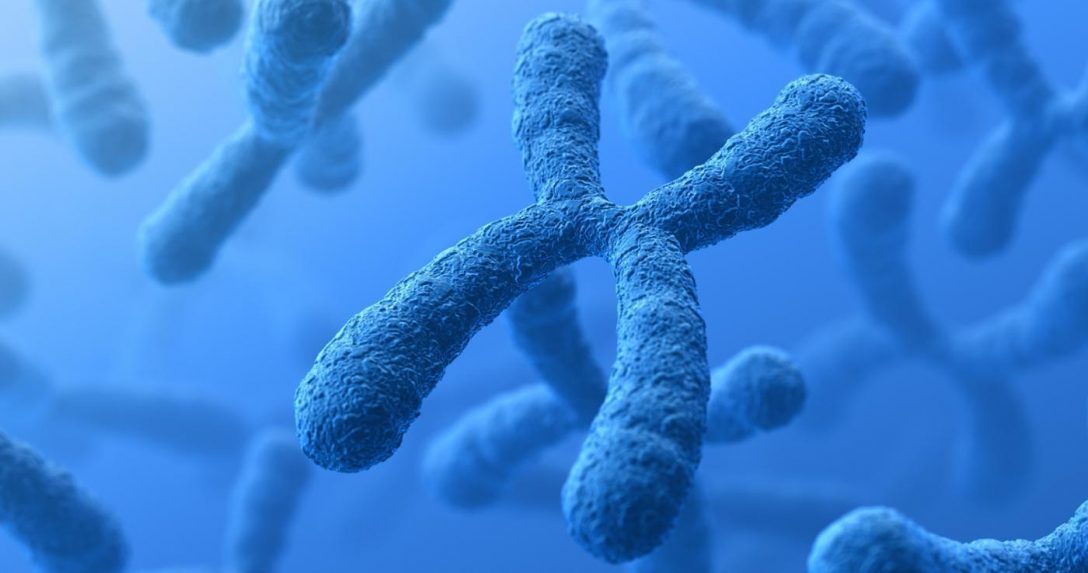What is DNA?
DNA is an essential part of who we are and is the basis of all life. Our genes are commonly referred to as our “genetic blueprint,” as they are the “manual” our body “reads” to create proteins we need in our bodies. These proteins then go on to performing essential functions, such as cell structure, signaling and transport.
DNA is made up of four base pairs – adenine, thymine, guanine, and cytosine. These base pairs are matched up with each other to form the “double helix” structure pictured below. Adenine is always paired with thymine, and similarly, guanine is always matched with cytosine. These base pairs for the “rungs” of the DNA “ladder.” The base pairs are connected to the sugar-phosphate backbone, which can be thought of as the sides of the ladder that give it a strong, yet flexible structure.
DNA Structure

 (6,7)
(6,7)
A section of DNA that codes for a protein is known as a ‘gene’. Going back to the ‘blueprint’ analogy, a gene can be thought of as a ‘chapter’ of the blueprint book – it tells you how to make one specific item (in this case, that item is a protein). An entire strand of DNA is also known as a chromosome. Chromosomes contain many genes, and are housed in the nucleus or control center of the cell. Humans have 23 pairs of chromosomes (46 total).
The Cell, Genes, and DNA
 (8)
(8)
Because of its double helix structure, DNA can be unwound, and the two strands of the helix can be temporarily separated. This allows a single strand of DNA to be “read.” Its’ specific sequence is transcribed into RNA (RNA can be thought of as our DNA in a different language), and the RNA sequence is translated as the guide for making the protein. These steps, known as transcription and translation, allow the DNA to be read and translated, allowing for new proteins to be created.
Transcription and Translation
(9)
Can we change our DNA?
Genes are passed down from one generation to the next through the gametes, or sex cells (egg and sperm). The fusing of these cells is known as fertilization, and it is the process by which each and every one of us was created. Through this process, half of our DNA comes from our mother and half from our father.
Sperm and Egg Each Pass Half of the Necessary DNA

Historically, the DNA we have received from our parents has been the DNA we live with for the rest of our lives. Put simply, we are left to play the “genetic cards” we have been dealt. However, with the use of new technology, it is possible that this may be changing. Gene editing is a new technique that has lead to the development of what is known as ‘germline gene therapy’.
Germline Gene Therapy
Germline gene therapy is a new method that can be used to change DNA sequence. This is done by isolating a target gene that you want to change and replacing that DNA with the desired DNA (1). It targets DNA in egg and sperm cells, which allows the new gene to be passed onto future generations, thus the original gene is no longer passed on (2). For germline gene therapy, this exchange of DNA material occurs directly before or after fertilization.
DNA is Altered in Either Mother or Father or in Fertilized Egg

How does Germline Gene Therapy work?
There are multiple ways to perform germline gene therapy. Within the past few years, a new technology has been developed to alter genetic material through the use of CRISPR (Clustered Regularly Interspaced Short Palindromic Repeats). This utilizes an enzyme (called Cas9) to cleave DNA and insert new DNA (3). This new technology has made the use of germline gene therapy an easy and realistic way to edit our genes.
CRISPR – The Tool for Changing Genetic Make-Up

The use of CRISPR for germline gene therapy is not currently used on human embryo in general practice. It has been used on human embryos in some highly controversial research cases such as in Mexico and China, and has been used in animal studies to replace sections of DNA (4). The use of this technique on humans has been widely debated (5). The video below gives a visual of how CRISPR works, and also introduces some of the controversial issues related to the use of this technique.
(13)
It is important to consider both sides of this debate. Some arguments for and against the use of germline gene therapy can be found in links at the top of the page, along with our personal recommendation for the use of this technology.
*DISCLAIMER – We are not professionals in the field; we are undergraduate students who have pulled evidence from primary and secondary literary sources and come up with conclusions based on the evidence we have collected.
Information Sources:
-
Willgoos, C. (2001). FDA Regulation: An Answer to the Questions of Human Cloning and Germline Gene Therapy. American Journal of Law Medicine 27(1), 101-124
-
Baltimore, D., et al. (2015). A prudent path forward for genomic engineering and germline gene modification. Science, 348(6230), 36-38.
-
Reis, A. et. al. (2014). CRISPR/Cas9 and Targeted Genome Editing: A New Era in Molecular Biology, NEB expressions, 1, Retrieved from https://www.neb.com/tools-and-resources/feature-articles/crispr-cas9-and-targeted-genome-editing-a-new-era-in-molecular-biology
-
Long, C., et al. (2014). Prevention of muscular dystrophy in mice by CRISPR/Cas9-mediated editing of germline DNA. Science (New York, N.Y.), 345(6201), 1184-1188.
-
Baltimore, D., et al. (2015). A prudent path forward for genomic engineering and germline gene modification. Science, 348(6230), 36-38.
Photo/Video Sources:
6. https://ghr.nlm.nih.gov/primer/illustrations/dnastructure.jpg
7. http://cdn3.vox-cdn.com/uploads/chorus_asset/file/658440/shutterstock_134698571.0.jpg
8. https://visualsonline.cancer.gov/retrieve.cfm?imageid=10062&dpi=150&fileformat=jpg
9. https://www.youtube.com/watch?v=gG7uCskUOrA
10. http://www.daviddarling.info/images/fertilization_diagram_simple.jpg
11. http://www.nature.com/nature/journal/v511/n7511/images/nature13648-f1.jpg
12. https://si.wsj.net/public/resources/images/HE-AA129_GENEED_9U_20150624184522.jpg
13. https://www.youtube.com/watch?v=UCC2oILE7i0
